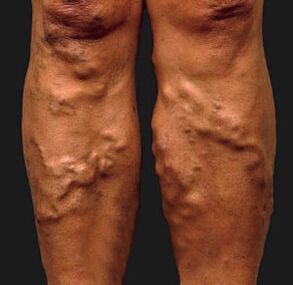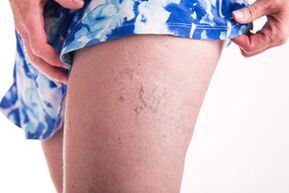
In case of violation of venous blood, the pressure inside the veins increases, they begin to expand and become visible under the skin.Varicious disease most often affects veins from the lower extremities, but can occur in any organ of the human body.
General characteristic
Varicose in the legs can affect men and women of any age, but more often found in middle -aged and elderly patients.Varicose veins are a very common disease.Up to 15% of elderly men and almost all elderly women suffer from this disease.
Risk factors for the development of pathology:
- the presence of a disease in close relatives;
- sedentary lifestyle;
- overweight;
- Long stay in standing position;
- pregnancy.
The causes of varicose veins
The causes of varicose veins are not fully studied.In some cases, poor blood exit through the veins is caused by the absence or weakness of the blood vessel valve apparatus located in the depths of the tissues.In addition, varicose veins of the lower ends and other organs can be caused by the weakness of the vascular wall itself.
The less common varicose veins in the legs are associated with the following conditions:
- inflammation transferred from veins (flexes);
- the formation of blood clots in the venous line;
- Congenital anomalies in the development of blood vessels.
The disease is characterized by a progressive course and cannot be completely healed.However, there is a very effective prevention of varicose veins - the use of compression socks, maintaining normal weight and regular physical activity, especially walking or swimming.The dynamic leg load helps the muscles push the blood in the veins and not to leak in the opposite direction.
Varicose veins

Depending on the location of pathologically altered vessels, these forms of varicose veins are distinguished:
- Varicose veins of the small pelvis in women;
- vein injury from the lower extremities;
- the expansion of esophagus veins during liver pathology;
- Post -Fluboflebetic Options in different organs.
There are such varicose veins:
- Compensated: There are no complaints, the veins expanded on the legs are visible;
- Subcompense: Patients complain of swelling, revulsion, gravity in the legs, seizures at night;
- Decompensation: Skin changes develop - hyperpigmentation, signs of chronic inflammation, trophic ulcers.
The clinic usually uses Ceap classification, completely describing clinical signs, causes, location of the lesion and the type of blood flow disorders.
Varicose veins symptoms
In the early phase of the patients, only aesthetic discomfort is concerned.In the future they come together:
- painful pain, seizures, itching on the skin;
- Swelling, especially at night, severity and fatigue in the legs;
- A sense of explosion.
The less frequent but more serious symptoms include:
- subcutaneous bleeding of a broken vein;
- thrombophlebitis;
- trophic ulcers;
- "Wet" dermatitis;
- Sour changes in the skin.
These complications are much worse for treatment than pathology at an early stage.
To explore the veins in the legs and get the treatment of varicose veins, you need to contact a vascular surgeon or phlebologist.The diagnosis necessarily includes vein ultrasound doppleography to evaluate the bloodstream, the vessel wall, valve apparatus.
Varicose veins

Methods on how to treat varicose veins depend on the size and location of the altered veins, the presence of symptoms and skin changes.The treatment of varicose veins is performed using various methods:
- the high position of the legs in the position of lying or sitting;
- the use of specially selected compression meshes;
- Sclerotherapy (the introduction of a special lumen drug with the formation of a blood clot and the subsequent vein destruction);
- Pathologically altered vein ablation using laser, radio frequency and other techniques;
- Surgical treatment of varicose veins in the legs - Flebectomy.
In the early stages of the disease, the doctor will prescribe a drug for varicose veins for oral or external use:
- varicose veins tablets;
- Varicose veins ointment with anti -inflammatory, venotonic, anticoagulants and others.
In addition, many patients use the treatment of varicose veins in legs with folk medicine:
- Horse chestnut or kalanchoe leaves alcohol tinctures to rub and compress;
- tomatoes, cabbage, kalanchoe;
- Herbal Infusions - Urtigas, Yarrow, Chamomile and Mosto de St. John, Raspberry Leaf and Altered Root.
Disease prevention
To prevent or slow down the development of varicose veins, doctors propose to adhere to these prevention rules:
- lifting the periodic legs to the pillow;
- prolonged position rejection;
- the use of preventive compression meshes, which can be selected in a pharmacy or medical store;
- Regular physical activity (walk);
- Weight control;
- If necessary, remaining for a long time - performing simple exercises (rolling from the toes to the heel, climbing socks, rotation in the feet).
Such measures will contribute to the mechanical reduction in the venous channel load, the improvement of the vein valve apparatus and the preservation of the vascular wall.


















